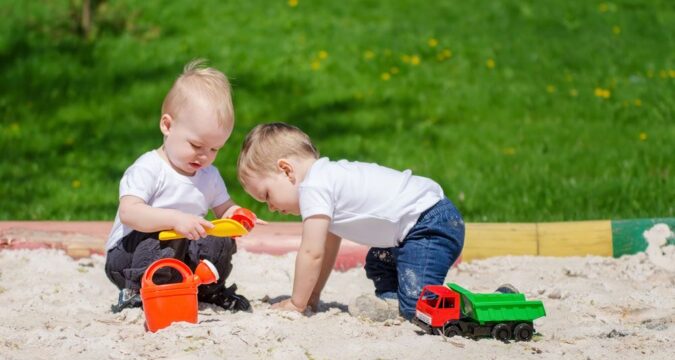
Creating a sensory play area for babies can significantly improve their cognitive and motor skills development. Sensory play encourages exploration through sight, touch, sound, and movement, vital for their early learning experiences. Use the following tips to create an engaging play area for baby sensory in Dubai:
Choosing the appropriate location:
Selecting an appropriate location is key to ensuring a safe and stimulating environment for sensory play. Opt for a quiet corner of the room away from distractions where babies can focus on exploring their senses without interruption.
Incorporating stimulating elements:
Introduce visually stimulating elements such as bright, contrasting colors and patterns. Hang mobiles or wall art with high-contrast images to capture babies’ attention and promote visual development. Soft, textured fabrics or posters with simple shapes can also add tactile and visual interest.
Providing textured surfaces:
Texture plays a vital role in sensory development. Include soft, tactile materials like plush rugs, textured mats, or blankets with different textures such as fleece, satin, or knits. Babies can explore these textures with their hands and feet, improving their sensory awareness.
Introducing sounds and music:
Sound is another vital aspect of sensory play. Incorporate soft, soothing music or musical toys that produce gentle sounds when touched. Rattles, chimes, or musical mobiles can engage babies audibly, promoting auditory discrimination and sensory exploration.
Offering safe objects for exploration:
Choose safe, age-appropriate toys and objects that babies can explore through touch and taste. Soft, non-toxic toys with varied textures, shapes, and sizes encourage sensory exploration without posing choking hazards. Avoid small objects or toys with sharp edges. Introducing subtle scents can also enrich sensory play experiences. Consider using scented fabric pieces or natural items like lavender sachets (ensuring they are safely secured) to introduce different smells for babies to discover.
Allowing freedom of movement:
Create a space where babies can move freely and explore their surroundings. Use soft, cushioned mats or play gyms that provide a comfortable surface for crawling, rolling, and sitting activities. Encouraging movement supports gross motor skill development and overall physical growth.
Keep the sensory play area active by rotating toys and materials regularly. Introducing new textures, sounds, and visuals prevents overstimulation and maintains babies’ interest in exploring their environment.


